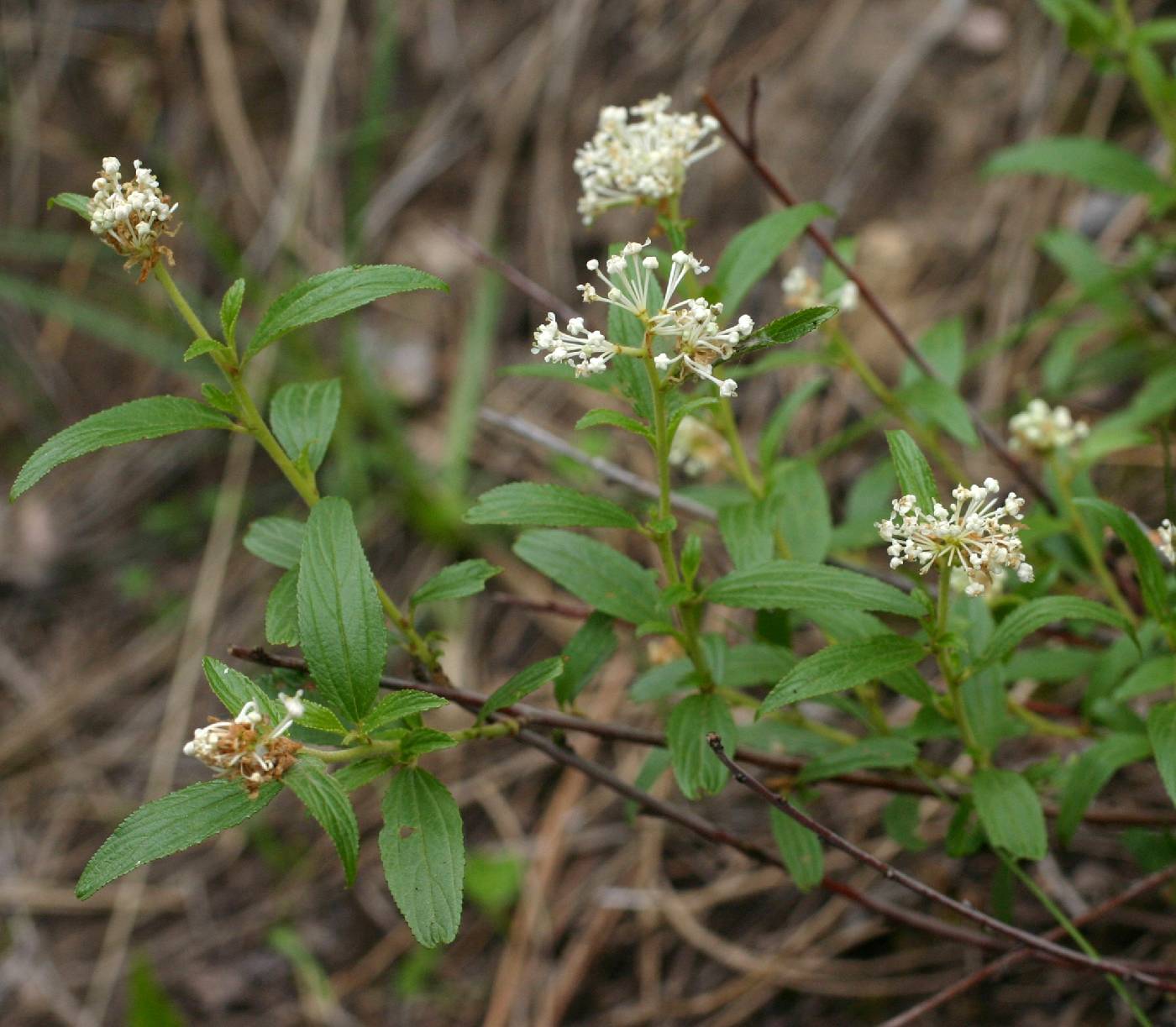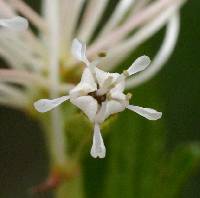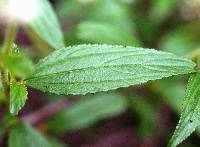|
|
|
|
Family: Rhamnaceae
Jersey tea
[Ceanothus herbaceus var. pubescens (Torr. & A.Gray ex S.Watson) Shinners, moreCeanothus ovatus var. pubescens Torr. & A. Gray ex S. Wats., Ceanothus pubescens (Torr. & A. Gray ex S. Wats.) Rydb. ex Small] |
Shrub to 1 m tall Leaves: alternate, stalked, dark green and sometimes hairy above, paler and hairy beneath, 2 - 6 cm long, 1 - 2 cm wide, narrow oblong to elliptic with a wedge-shaped to rounded base and a blunt to slightly pointed tip, toothed, with three major veins radiating from base. Inflorescence: tightly branched (panicle), borne at the end of the current year's growth on a stalk rarely reaching 5 cm, 1 - 3 cm long, semi-circular to short egg-shaped. Flowers: with five white, clawed petals resembing tiny ladels and five stamens. Fruit: a dark brown, round, three-parted berry-like capsule about 3 - 5 mm wide, with three shiny reddish brown nutlets. Twigs: slender, green to brown and hairy when young, becoming brown to dark gray and smooth. Similar species: Ceanothus americanus has mostly egg-shaped leaves, and the inflorescences are borne on long stems arising from the leaf axils. Flowering: late May to early June Habitat and ecology: Rare in the Chicago Region, found in low dunes and sandy soils near Lake Michigan. Occurence in the Chicago region: native Notes: Ceanothus herbaceus is sometimes grown as an ornamental and has a symbiotic relationship with a nitrogen-fixing bacteria. Insects are attracted by the flowers, deer eat the leaves, and birds eat the fruit. Native Americans once made the leaves into a tea and used the large woody roots as fuel on bison hunts and when firewood was scarce. Colonists used the leaves as a substitute for black tea after the Boston Tea Party to support patriotism during the American Revolution. A dye is made from the dark red roots. Etymology: Ceanothus comes from an ancient Greek name for a different plant. Herbaceus means "not woody," referring to the small leafy branches of the new growth. Author: The Morton Arboretum Bushy shrub to 1 m; lvs typically oblong to elliptic, varying to lance-oblong or oblanceolate-oblong, 2-6 נ1-2 cm, obtuse or subacute, the lateral nerves never naked and often arising unevenly 1-3 mm above the base of the lf; panicles several to many, terminating the leafy branches of the season, on peduncles rarely to 5 cm, hemispheric to short-ovoid, the component umbels closely set; fr 4-5 mm. Sandy or rocky soil, prairies, and plains; a few stations in Vt., N.Y., and Que.; Mich. to Minn. and e. Mont., s. to nw. Ind., Ark., and Tex. May, June. (C. ovatus; C. pubescens) Gleason, Henry A. & Cronquist, Arthur J. 1991. Manual of vascular plants of northeastern United States and adjacent Canada. lxxv + 910 pp. ©The New York Botanical Garden. All rights reserved. Used by permission. |




